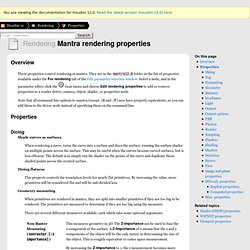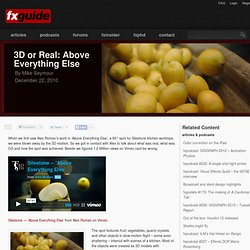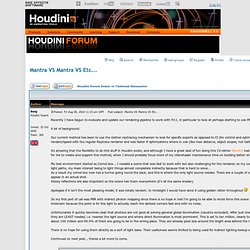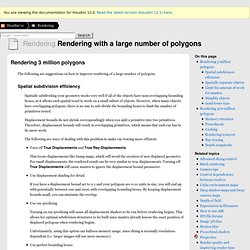

How to gamma correct the env map for the env light inside H. 3d texture projection question - Page 2 - Shaders - od. Bah!

Hdri and environment light - Rendering.
Filtering. How do i get an ambient occlusion render pass. Ambient Occlusion pass is generally considered an ambient light pass devoid of any color.

All surfaces are simple diffuse surfaces. This technique doesn't make sense to me with the pbr render engine but you can do it if you wish to control that contribution as a "light". Read below. AO can be done as a separate pass where clay shaders are assigned to your objects and then add an Environment Light to the scene and render your pass. This technique works the same for mp/rt and pbr render engines. Ambient occlusion pass. Linear workflow in houdini quick question... 'dyei nightmare', on 16 Mar 2012 - 12:26 AM, said: i just wanna know in houdini where do you raise up the gamma to 2.2 and how can you reduce gamma to .455 in images... or in other words... how do you set up linear workflow in houdini?

Ive seen some topics on this, but they are more about gamma correction itself.. i already know whats the linear workflow, i just wanna know how do you set up it in houdini?? Linear workflow you say? It's a buzz word for something, which is simply the only correct way of doing things in CG, and as such was in use years before someone ingenious has named it "Linear Workflow". Basically: Mantra rendering properties. Allow motion blur Mantra will render the image using motion blur.

The shutter parameter on the camera determines the duration of the shutter, specified as a fraction of the frame. The Xform Time Samples and Geo Time Samples parameters should be used in motion blur renders to control how motion blur is computed. By default, only transformation motion blur with 2 segments will be computed - meaning that animated SOPs will not produce blur in the render. LightPath. From Odwiki Light transport is the term used for defining paths that light can take to go from a light source to a surface. There are four different paths that light can take to get to a surface (and thus provide illumination). Direct Diffuse Indirect Diffuse Direct Specular Indirect Specular. 3D or Real: Above Everything Else. When we first saw Alex Roman’s work in ‘Above Everything Else’, a 60″ spot for Silestone kitchen worktops, we were blown away by the 3D realism.

So we got in contact with Alex to talk about what was real, what was CG and how the spot was achieved. Beside we figured 1.2 Million views on Vimeo cant be wrong. Silestone — ‘Above Everything Else’ from Alex Roman on Vimeo. This is all CGI click for a larger version The spot features fruit, vegetables, quartz crystals and other objects in slow-motion flight – some even shattering – intercut with scenes of a kitchen.
“Realism was my main goal here,” says Roman. IES light shape. Lighting a dark and scary scene. Use spot lights that reference IES light maps that you can download from many Light manufacturers.

Use the angle in the IES light settings to get nice "flashlight" effects in the volume. I would opt for this over geometry lights which are noisier in PBR at this time. Definitely modify the Attenuation Options on the light using physically correct and using the ramp along with the Ramp Atten Distance set to the same as the Active Radius (the maximum distance away from the light source that the light will illuminate anything). Boost the light value up until it looks bright enough for the scene. Passes for volumes. Position, normals and volumes...

Position from volumes is ambiguous. How do you expect a volume to generate a single P position hit? The darn volume is partially transparent and the ray can penetrate quite deeply. What kind of sorcery or manufactured magic you use to derive a P and then make it work in production is dubious at best. The Art of Rendering. Mantra VS Mantra VS Etc... Recently I have begun to evaluate and update our rendering pipeline to work with H11, in particular to look at perhaps starting to use PBR and Photon maps for indirect lighting.

A bit of background. Our current method has been to use the Gather raytracing mechanism to look for specific exports as opposed to Cf (for control and optimization purposes), this has been successful so far in matching (H10) PBR renders/speed with the regular Raytrace renderer and was faster if optimizations where in use (like max distance, object scopes, not Gathering expensive stuff, etc). Its amazing that the flexibility to do this stuff in Houdini exists, and although I have a great deal of fun doing this I'd rather Mantra had the Vray/Modo like lighting accelerators to begin with. It's quite a lot of work for me to create and support this method, when I should probably focus more of my Ubershader maintenance time on building better shading interfaces for my users. My test environment started as Cornel box... Rendering with a large number of polygons. The term Depth Complexity refers to how many primitives are stacked in Z at a particular point in screen space.

For example, a single polygon in the scene would have a depth complexity of 1 (or 0 for pixels that the polygon doesn’t cover). A box will have a depth complexity of 2 (one for the front surface, and one for the back surface). The greater the depth complexity, the greater the processing and memory use. However, objects which are entirely occluded by foreground primitives can be culled by mantra, so that mantra can minimize work and memory when objects are fully occluded.
However, the only way mantra knows whether a primitive is occluded is by evaluating its bounding box. So, if you think of two circles which are right behind each other, as a human you would be able to say that the background circle wouldn’t need any processing. Depth complexity can become a serious issue when it come to transparency. Tile Rendering (batch farm)